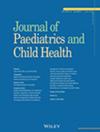Impact of COVID-19 on Hospital Admissions for Children With Developmental Disadvantages: A Western Sydney Metropolitan Hospital Experience on Health Inequity
Abstract
Aims
To investigate the impact of Sydney's COVID-19 lockdown on children with developmental disadvantages and reflect on current clinical practice.
Methods
Retrospective data was collected from a western Sydney metropolitan hospital's electronic database and patients. We reviewed all children with Autism Spectrum Disorder (ASD), Cerebral Palsy (CP) or Intellectual Disability (ID) admitted 36 months prior to and after lockdown policy being implemented.
Results
The prevalence of hospital presentation was reduced during the lockdown period. The average length of stay (LoS) increased by approximately 1.5 folds. Comparatively, the average LoS of the general paediatric population increased minimally. Seizures, asthma, and upper respiratory tract infections were the three commonest issues for hospital admissions in both periods. COVID-19 infection accounted for 4% of admissions in the lockdown period. Around 20.8% of patients with disadvantages were admitted with more than two major issues. None of these patients had concurrent COVID-19 infection.
Conclusions
Children with developmental disabilities experience greater disadvantages during lockdown. The likely reasons include inequity caused by increased barriers to healthcare service. The indirect benefit of reducing infection transmission during lockdown was not reflected in our patient group, contributing to the disease burden. Chronic diseases remain the most common causes of admissions in all periods, suggesting the essentiality of improving chronic disease management in future clinical practice.


 求助内容:
求助内容: 应助结果提醒方式:
应助结果提醒方式:


